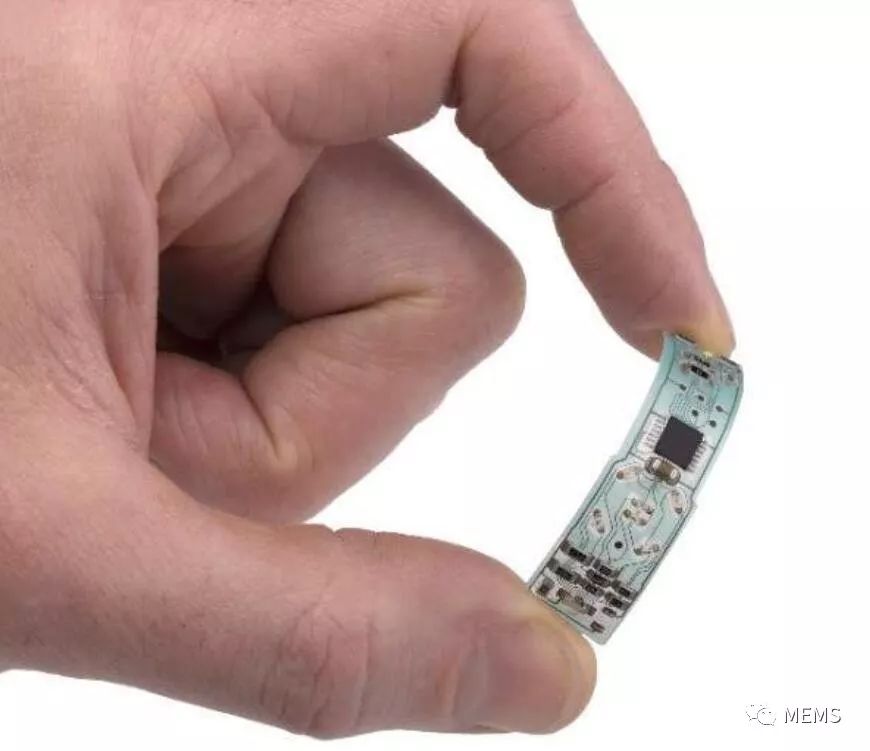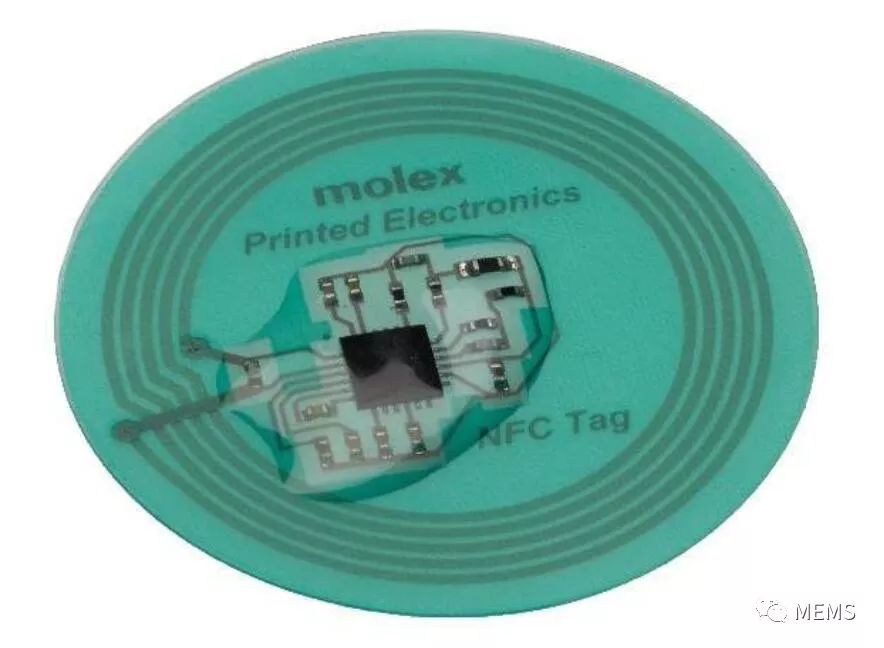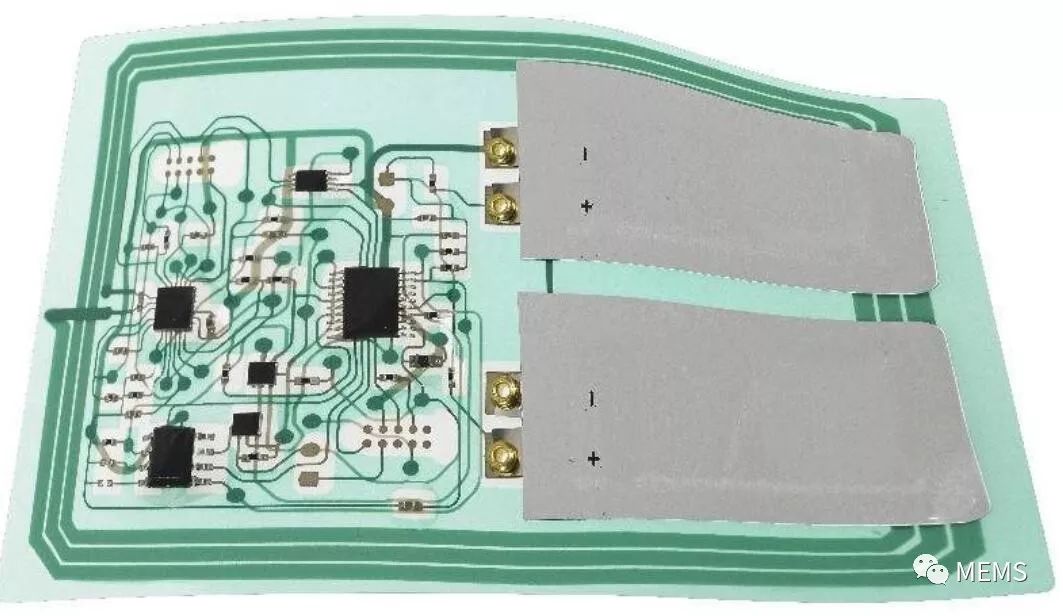Advances in wireless technology have opened up new opportunities for flexible electronics. Near Field Communication (NFC) can realize two-way short-range wireless communication. It belongs to a class of emerging technologies, and its market positioning is to form the architecture of a flexible printed sensor system. Printed NFC sensor devices, such as wearable temperature monitors or tamper detection devices, do not need to provide power, plug or wired connection on the circuit board. The integrated chip on the jumper is close to the reading with NFC function. Device or cellular device. The production of NFC sensor systems requires NFC functional components and sensor functional components.
Now, through the use of printed silver flexible manufacturing and assembly processes, the manufacturing efficiency of these two types of main functional components can be improved. Recent developments in silver ink and printing technology can print the conductive antenna coil traces required by each NFC tag inlay layer or device on a highly durable and highly flexible polymer substrate. Compared with the equivalent copper circuit, the conductive ink on polyester can significantly reduce the cost of the substrate. Sensors can be formed on the same substrate, or sensors can be connected to it, and this process supports the addition of microcontroller (MCU) units and other electronic components to achieve a fully integrated solution. From freight and logistics to patient monitoring in pharmaceuticals and medical facilities, NPC printed sensor systems are now being transferred to many industries that require one-time use.
In order to successfully switch to silver flexible technology, several factors must be carefully considered when specifying conductive inks and substrate materials for a given application. This approach is especially correct when transitioning from a traditional rigid circuit or flexible copper circuit to a printed silver flexible sensor system with NFC function. NFC needs to rely on the conductivity of the antenna coil traces. The etched copper traces are a highly conductive base material, and the width may be as small as 0.003 inches. However, the conductivity of the printed silver circuit is lower than that of copper as the base material, so the printed traces need to be wider. Because the polymer substrate will buckle during the normal use of the component, the wider traces can be especially maintained. The integrity of the printed traces.
To successfully switch to silver flexible components requires relevant knowledge to make the necessary adjustments to correctly form wider traces and design antennas with the same functions as copper-based components. An experienced design and development team should be deployed to simplify this process. The use of advanced and proprietary sheet metal manufacturing and rolling manufacturing processes can simplify the printing process of smart tags, sensor jumpers, and silver traces on other large-volume products. Unlike FR-4 or copper flexible circuit boards, printed silver flexible technology adds options and capabilities for further conversion, such as forming a roll of sensor labels with NFC function, or using graphic stickers for beautification.
According to the complexity of the printed sensor design and its expected functions, the transition from an FR-4 circuit board to a printed silver circuit on a lower-cost polymer substrate may be the best solution. For complex applications, for example, if the pitch of ultra-miniaturized components on a printed circuit board is too dense, FR-4 circuit boards that traditionally use copper are very likely to be the preferred technology.
For applications with a small number of components (about 20 pieces or less), the advantages of silver flexible technology will be more obvious, because it can reduce the proportion of the substrate area covered by the silver traces. For example, jumpers on wearable fitness or medical sensors can provide ample space, support wider silver traces, and require more flexible and flexible substrate materials, such as polyester. The printed silver flexible technology on polymer is lighter in weight and has extremely high flexibility in three dimensions (3D), so any of the above applications can also benefit from this technology. Another advantage is that compared with copper, silver is more environmentally friendly and its manufacturing process is cleaner. This is because the additive silver printing process does not produce harmful chemical etching waste.

Figure 1 shows a representative Molex SilverFlex circuit on a polyester substrate, showing the small size and flexibility of the circuit
Generally speaking, in battery-powered devices, the power consumed by any wireless data communication protocol will account for a large proportion of the total power required. Using NFC can reduce the total power requirements of the device, because all the power for wireless data communication is delivered from the NFC reader. The sensor system that provides wireless reading function and NFC-enabled does not need to consume power. The reader can send power supply and data instructions to the NFC-enabled sensor system, and then the system will send the data back to the reader to respond. To design a wireless NFC sensor system for a printing-based manufacturing process, a variety of solutions can be adopted. In the design stage, the best method should be identified as early as possible.

Figure 2 Molex NFC temperature reading tag instantly
Application-driven NFC sensor system architecture
The system architecture of the integrated NFC and MCU chip is relatively simple. A single chip can provide well-defined functions and is extremely cost-effective. However, the function of the finished product will be limited by the hardware. Therefore, the integrated design is most suitable to meet the requirements of highly specific applications. The independent NFC and MCU chips can usually provide better equipment for more complex devices. stand by. Two-chip packaging will increase engineering requirements and increase engineering costs, but it allows a higher degree of customization. For example, it can support multiple applications or multiple product lines, and monitor the needs that are still developing. In the design and development cycle, the dual-chip solution can improve the versatility, make the data recording function independent of the data communication part, and provide more complex and robust functions. The MCU can gradually perform the data recording function over time, and there is no need to power up the NFC, thereby extending the battery life of the device.
The NFC sensor system can be integrated into smart tags and other devices, suitable for applications that require data recording functions, and is useful for time and temperature records in the product shelf life, or monitoring of heat-sensitive or environmentally sensitive products. The barcode or RFID reader only transfers data from the tag to the reader in a one-way manner. The difference is that the NFC chip embedded in the mobile phone can be deployed in a reader-writer mode for Data acquisition application use. Then, the mobile phone can facilitate the long-distance transmission of the collected data to the server and the cloud through the cellular data connection or Wi-Fi connection.
Depending on the chip and antenna, the typical distance to activate the NFC sensor device is different, but it is generally within 4 centimeters (cm). The near-field range of non-radiative NFC signals can minimize electromagnetic interference, which can provide a more secure communication platform while reducing the risk of data leakage or data intrusion. From a power point of view, compared with Bluetooth wireless technology, the total power consumed by NFC devices is lower, which means that the battery life of the sensor system can be extended.

Figure 3 Molex NFC temperature logging smart tag, showing flexibility and transparency
Promoting innovation in the digital age. NFC is a time-tested technology for secure access, electronic payment systems and other short-range wireless applications, but it has only recently been adopted by modern mobile phones and many types of tablets in homes and offices. The computer is completely adopted. This development trend represents a big step forward, and the required infrastructure can be established to elevate the deployment of NFC to a level. One of the areas with the greatest development potential in printing manufacturing technology is the potential to promote innovation in the digital age.
Combining NFC and cellular communication to make full use of the application of silver-printed sensor systems can provide a usable and data-driven insight to an unprecedented degree. Mobile devices and mobile applications can provide inherent functions such as time-based sensitivity, location services, and remote power communications, and provide support for the development of new applications used by NFC sensor systems.
NFC can be customized to meet the requirements of a range of applications. By reducing the energy required for data readout, it is reshaping the architecture of the sensor system. This technology can also achieve continuous automated monitoring without the need for batteries, which can significantly extend the life of the equipment or reduce the bill of materials cost of the sensor system. The NFC function can be well combined with the silver flexible printing process and manufacturing process.
Laptop AC adapter for common brands, such as HP, Sony, Lenovo, Dell, Asus, Toshiba, Acer, Samsung etc. Our products have high quality and reasonable price.
CE, FCC, ROHS certification are approved by our products, and it have two years warranty. Built with input/output overvoltage protection, input/output overcurrent protection, over temperature protection, over power protection and short circuit protection. We are a professional power adapter manufacturer in China. We can meet your specific requirement. We have perfect after-sale service and technical support.
Hope we can establish friendly business relationship with you in the near future!
Laptop Adapter,Adapter For Macbook,Power Supply For Macbook, Charger For Macbook
Shenzhen Waweis Technology Co., Ltd. , https://www.waweispowerasdapter.com